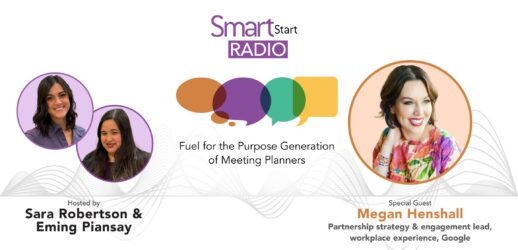Nonverbal cues change the emotional life of attendees
The job of an event professional is to spread ideas. This is true whether you are on stage, talking to attendees, or working with a team to execute a program or one-on-one with a friend. The easiest way to communicate your message may not be to say it, but to show it.
Understanding at First Sight
Vanessa Van Edwards, a behavioral investigator and author of Captivate: The Science of Succeeding with People, has made a career out of studying body language, charisma, influence and power. She shared some tips for becoming more likeable—something that coincidentally is vital to infecting others with feelings of confidence.
In a London TED talk that has been heard by more than 1.4 million people, she said that people look at hands first—before face, eyes or even shoes. They are looking for signs about whether people are friends or foes—whether they can trust what they are hearing. In fact, people give hand gestures 12.5 times more weight than the content of their words.
Van Edwards calculated that popular speakers use 465 hand gestures in 18 minutes, almost twice as many as less popular speakers. That gives a whole new meaning to the idea of a sleight of hand.
Really, people are watching the entire body for clues. Our brains intuitively understand the difference between someone who is really smiling with their entire face and someone inauthentically pasting on a grin.
The good news is that facial expressions are both reactionary and causal. When we smile, it makes us happy. And, when we are honestly happy, we smile broadly. When we smile authentically, others smile right along with us.
Van Edwards also did tests of people listening to just one word on the phone, and found that our brains can pick up emotional cues based on tone and inflection. Subjects could tell from just the way people said, “hello” what mood they were in. That information affects everything, from whether they like you to whether they trust you and want to do business with you.
A Sense of Smell
We send signals in other nonverbal ways, including through chemicals secretions. Yep, the quality of our sweat can influence how people feel. Van Edwards used the example of having people in an fMRI machine sniff pads soaked with the sweat of people who jumped out of an airplane. The fear sectors of their brain lit up, even though the subjects didn’t know the source of the smell. This was not true of sweat from people who had just worked out at the gym.
That means in order to subtly control the feelings in the room, we have to monitor what we are feeling. Our thoughts are contagious.
Memory Making
A recovering awkward person lives inside all of us. That person often comes out at networking events. We run through a litany of stock questions about their job or where they live. It is often asked without much thought and answered with the same autopilot approach. However, Van Edwards has found that if we rewrite the script to prompt the brain to search for positive responses, it triggers dopamine. The reward chemical leads to more animated responses—more leans-ins, increased nods, higher volume and more authentic smiles—signs of a meaningful interaction.
“Prompting someone to think of pleasant things literally borrows good feelings form the exciting things in their life and transfers it to your conversation,” she said.
Being associated with those pleasure chemicals has the added bonus of making you more memorable. When dopamine is triggered, it creates a mental sticky note that makes a snapshot of you and the pleasant feeling easier to retrieve later.
The greatest gift you can give to your fellow human beings is to flip them into optimism. Put them at ease. Encourage them to smile by modeling positive behavior. That will trigger active exchanges, Van Edwards said.
How to Ask Better Questions
If you want to infect people with meaningful, positive feelings, then you have to banish predictable questions from your cocktail party repertoire. Try these alternatives.
- Instead of “What do you do?” ask, “What exciting projects are
you working on?” - Instead of “Where are you from?” ask, “What vacations do you have planned?”
- Instead of “How are you?” ask, “What good thing happened today?”
Be the First to Know
Everything meeting planners need in one beautiful print and digital magazine




